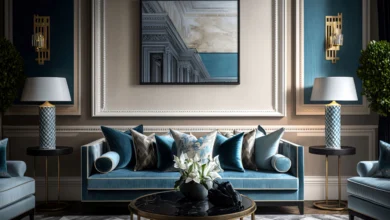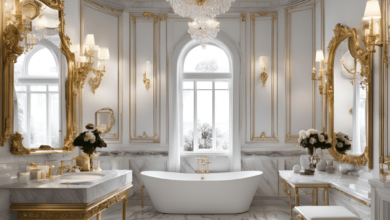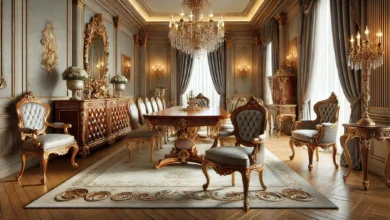European style Interior Design: 7 Essential Elements for a Luxurious Home
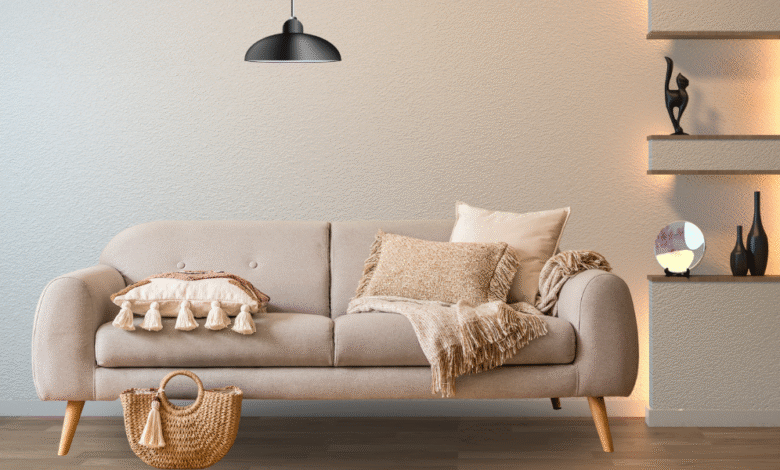
European style in classic interior design is a timeless choice for many homeowners. It’s known for its enduring elegance. You might wonder how to bring this style into your home. European classic furniture and decor add sophistication to any room.
To blend European style perfectly, understanding its history and key elements is key. By using classical motifs, luxurious materials, and paying attention to detail, you can create a space full of elegance. This is what makes European classic design and luxury classic decor so special.
Table of Contents
The Allure of European Classic Design
European classic furniture and decor have been loved for centuries. They can make any space grand or refined. European style in classic interior design offers endless inspiration and possibilities.
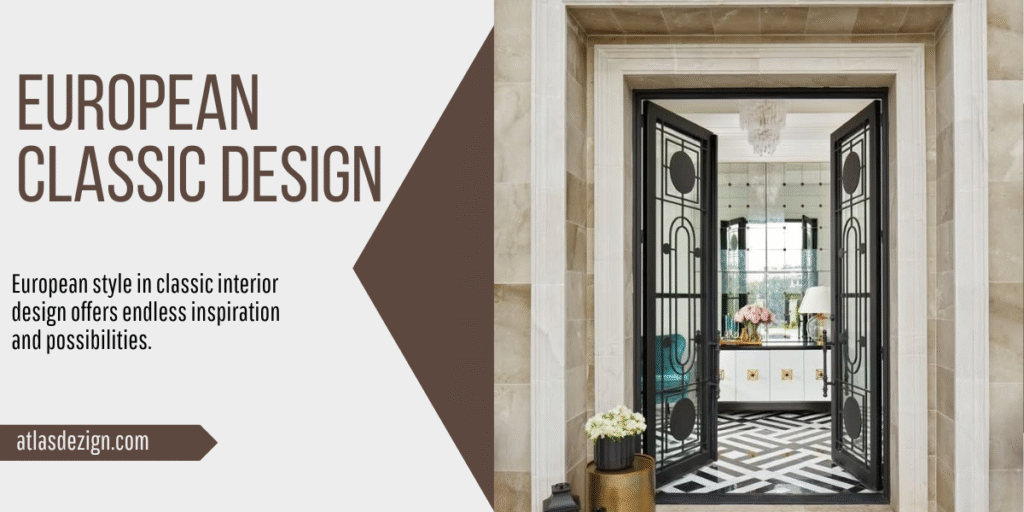
Key Takeaways
- European classic design is a timeless and elegant style that has been popular for centuries.
- Incorporating classical motifs and luxurious materials can add sophistication to any room.
- Understanding the historical origins of European style in classic interior design is essential to achieving an authentic look.
- European classic furniture and decor can be used to create a range of atmospheres, from grand and opulent to understated and refined.
- Luxury classic decor and European classic design can enhance the beauty and elegance of any space.
- Attention to detail is crucial when incorporating European classic design elements into your home.
The Renaissance of Classical European Design in Modern Homes
Thinking about adding classical European design to your home? It’s because this style brings luxury and sophistication. It’s all about neoclassical style and luxury European decor. It uses classic colors like neutral tones and rich hues to make any room elegant.
Recently, more people want palace-inspired interior design in their homes. They aim to bring the grandeur of European palaces into their spaces. This style is not just about being fancy. It’s about adding history and tradition to your home. Using elements like columns and arches can make your space feel more refined.
When adding classical European design to your home, consider these key elements:
- Classic design colors, such as neutral tones and rich hues
- Luxury materials, such as marble and wood
- Classical elements, such as columns and arches
- Attention to detail, including ornate moldings and intricate patterns
By using these elements, you can make your space elegant and timeless. It will have a luxury and sophistication that modern design often lacks. Whether you want to bring the grandeur of a European palace into your home or just add classic elegance, neoclassical style, and luxury European decor will inspire you.
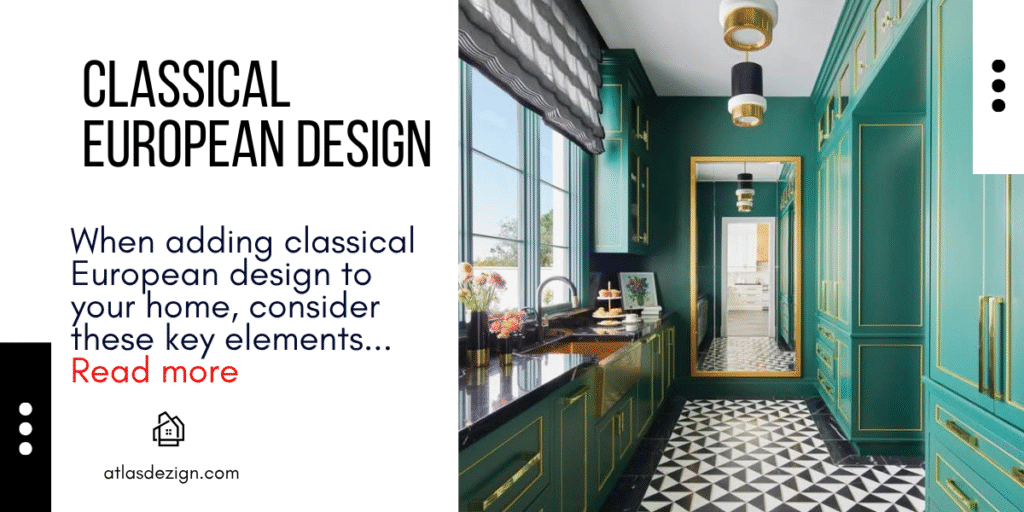
Essential Elements of European Style in Classic Interior Design
To get a classic European interior design, focus on key elements. These elements bring the elegance and sophistication of traditional European homes into your space. Ornate sofas and chairs, for example, add luxury. Tapestries, rugs, and ornate accessories create warmth and coziness.
European classical interior design is known for classical motifs, luxurious materials, and detail. Rich fabrics like velvet and silk add opulence. Look for furniture with intricate carvings or gilded details. Vintage tapestries or antique rugs add authenticity.
Here are some key elements to consider:
- Classical motifs, such as acanthus leaves or floral patterns
- Luxurious materials, including marble, wood, or rich fabrics
- Attention to detail, including intricate carvings or gilded accents
- Traditional European home decor, such as vintage tapestries or antique rugs
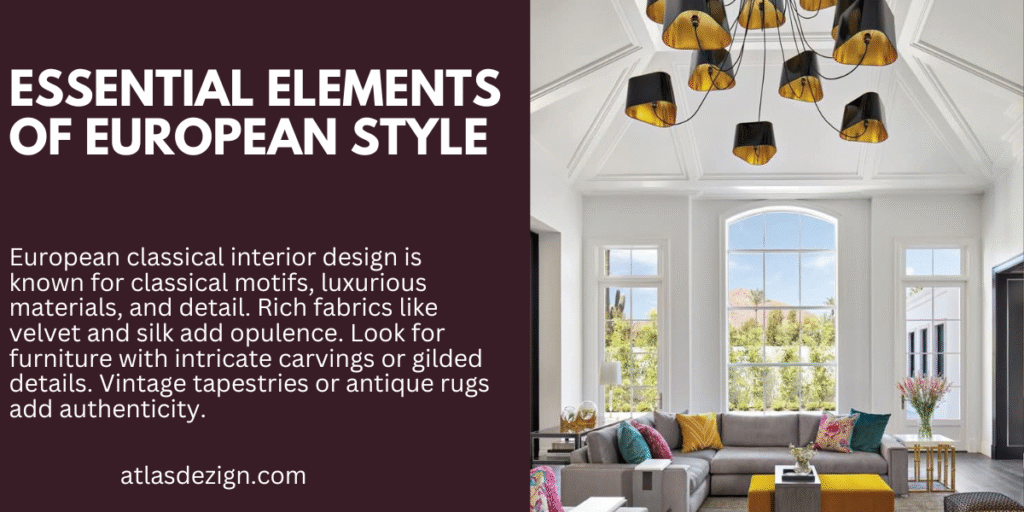
By using these elements, you can create a classic European interior design. It will be elegant and sophisticated, with European classic furniture and traditional decor.
Historical Foundations: From Palatial to Practical
To grasp the essence of European classical design, we must explore its roots. This style’s evolution is rich, influenced by ancient Greece and Rome. When aiming for a European style in your home, knowing the difference between classic and neoclassical design is key.
The journey of European classical design is captivating, with moments of grandeur and simplicity. Elegant decor, like ornate mirrors and chandeliers, can bring sophistication to your space. By embracing this style’s history, you can make your home elegant and refined.
Greek and Roman Influences
Greek and Roman architecture’s classic elements, like columns and arches, have shaped European design. These elements have evolved, blending classic and neoclassical styles.
The Evolution Through Baroque and Rococo
The Baroque and Rococo periods brought a more ornate design, with intricate patterns and gilded details. This evolution has enriched European classical design, offering many inspirations for elegant interiors.
Neoclassical Transformations
The Neoclassical period saw a return to simplicity and elegance. It focused on clean lines and balance. This period’s influence still shapes our views on home design today. Understanding this history helps you create a timeless, beautifully appointed space.
Distinguishing Features of Authentic European Classical Decor
To create a space that feels like vintage European design style, focus on key features. Use architectural elements like columns and arches. Also, pay attention to proportions to achieve harmony and balance.

Choosing the right colors and materials is crucial for authentic European interior design. Opt for neutral tones, rich hues, and luxurious materials. Think about adding marble, wood, and velvet for a touch of luxurious European decor. Also, include ornamental details like carvings and moldings for elegance.
Key Elements to Consider
- Architectural elements, such as columns and arches
- Attention to proportions and balance
- Neutral tones and rich hues in color palettes
- Luxurious materials, such as marble and velvet
- Ornamental details, such as carvings and moldings
By using these elements, you can make a space that truly captures the essence of vintage European design style and authentic European interior design. Balance your design choices for harmony and sophistication. This will result in a space that showcases the beauty of timeless European home interiors and luxurious European decor.
Embracing European Classical Design in Contemporary Living
Adding sophisticated European design elements to your home can make it more elegant and timeless. By mixing classic European interior design with today’s styles, you can achieve a balanced look. This blend creates a space that feels both modern and sophisticated.
To make your home feel European, use classic designs, luxurious materials, and pay attention to details. Look for ways to add these touches to your decor. This could be through special furniture, detailed moldings, or rich colors. With some creativity, your home can become a beautiful tribute to European design.
The secret to combining European classical design with modern living is finding a balance. By embracing this style, you can make a space that is both beautiful and meaningful. It shows off your personal taste and love for European elegance.
FAQ
What are the essential elements of European style in classic interior design?
European style in classic interior design focuses on classical motifs and luxurious materials. It includes using European classic furniture and traditional decor. Think ornate sofas, chairs, tapestries, rugs, and ornate accessories.
How can I achieve a European character in my home’s classic interior design?
To get a European feel in your home, learn about the style’s history and key elements. Use classical motifs, luxurious materials, and pay attention to detail. Add palace-inspired touches like classic colors and grand, luxurious vibes.
What are the distinguishing features of authentic European classical decor?
Real European classical decor stands out with architectural elements like columns and arches. It focuses on neutral and rich colors and luxurious materials. Look for ornamental details like carvings and moldings.
How has European classical design evolved?
European classical design has changed a lot, influenced by many cultures and periods. It started in ancient Greece and Rome, then got more ornate in the Baroque and Rococo periods. The Neoclassical period in the 18th century brought back simplicity and elegance.
What are the key differences between classic and neoclassical design?
Classic European design is more ornate, while neoclassical design is simpler and more elegant. To get a European look, know these differences and pick the right elements for your space.


